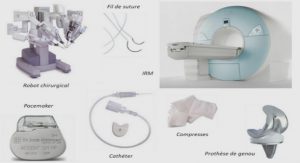Mg-Ni-based systems for hydrogen storage
Mg-Ni-based alloys are considered to be promising candidates for hydrogen storage applications because of their low cost, light weight and rich mineral resources, as well as high theoretical hydrogen storage capacity (assuming the formation of Mg2NiH4, it is 3.6 mass%, equivalent to 999 mAh/g for the discharge capacity, which is approximately 2.7 times that of LaNi5 [1]). However, the high thermodynamical stability, sluggish hydriding/dehydriding kinetics and poor cycle stability of Mg-Ni-based alloys become the obstacle for the practical use for hydrogen storage. In this chapter, firstly, the fundamental data on Mg-Ni-based systems and their hydrides are briefly summarized, including phase diagrams, crystal structures and thermodynamical properties etc. Meantime, the phase compositions of Mg-Ni-based alloys, especially nanostructured and amorphous phases are discussed. Secondly, the methods of improving hydrogen storage properties of Mg-Ni-based systems, such as (1) partial element substitution; (2) adding suitable catalysts; (3) adding carbon materials; (4) different preparing methods for synthesizing Mg-Ni-based alloys, are presented. Thirdly, first principles investigation on Mg-Ni-based alloys (including substitutional doping of other elements) and their hydrides (e.g. high temperature (HT)-Mg2NiH4 and low temperature (LT)-Mg2NiH4 ) is discussed. Finally, the conclusions are given.
Fig.1 shows the Mg-Ni binary phase diagram, and it can be seen that there are two stable compounds, namely MgNi2 and Mg2Ni. MgNi2 does not react with H2 at pressures up to 27.6 bar and temperatures up to 350@. Whereas, Mg2Ni reacts readily with H2 at 20.7 bar and 325@ [2].The structure of Mg2Ni phase is shown in Fig. 2. Its unit cell belongs to the space group P6222 with lattice parameters a=5.216(6) Å, c=13.20(6) Å [3]. The Mg2Ni unit cell contains 6 formula units, and therefore it can be expressed as Mg12Ni6. The 12 Mg atoms occupy 6f and 6i lattice sites, while 6 Ni atoms occupy 3b and 3d lattice sites. The different lattice sites are denoted by the balls in different colors as shown in Fig.2. Therefore the theoretical gravimetric hydrogen storage capacity of Mg2Ni alloy is 3.6%. Additionally, metastable oversaturated phases, such as Mg2NiH [5], Mg2NiH1.2 [6] and Mg2NiH1.8 [7] have also been reported. Mg2NiH4 hydride has two polymorphs: low temperature (LT)-Mg2NiH4 (monoclinic) and high temperature (HT)-Mg2NiH4 (cubic). The transition temperature is between 210 and 240@ »[8]. The unit cells of these two polymorphs are exhibited in Fig. 3. It can be seen from Fig. 3a that the LT phase has monoclinic symmetry with space group C2/c (a = 14.343 (5) Å, b = 6.4038 (10) Å, c = 6.4830 (13) Å, β = 113.52 (4)°) [8]. The monoclinic Mg2NiH4 unit cell contains 8 formula units, which can be expressed as Mg16Ni8H32. It contains four types of symmetry-independent H atoms (8f), which surround Ni atoms (8f) in nearly regular tetrahedral configurations. The unit cell of the HT-Mg2NiH4 is shown in Fig. 3b. Its unit cell belongs to the space group Fm-3m with lattice parameter a= 6.507 (2) .
The metal atoms exhibit an anti-fluorite arrangement. Ni and Mg atoms occupy the cation (4a) and anion (8c) sites, respectively, whereas the H distribution has not been completely determined by diffraction methods. García et al [10] calculated the electronic properties of cubic Mg2NiH4 for different hydrogen configurations and concluded that the minimum-energy configuration corresponds to a tetrahedrally distorted square-planar distribution of hydrogen atoms around the nickel atom. They also indicated that the regular tetrahedral arrangement as shown in Fig. 3b produced a semiconductor with an indirect gap of 1.17eV, which is in agreement with experimental results [11]. In both HT and LT-Mg2NiH4, the bonding interaction between Ni and H is stronger than that between Mg and H, and hydrogen is bonded with nickel in a mixed ionic–covalent bonding to form a complex [NiH4]4– which in turn bonds ionically to the Mg2+ ions.
Though Mg2NiH4 possesses a high hydrogen storage capacity, it is too stable in terms of thermodynamics (requiring 280@ for 1bar hydrogen [12]). The enthalpy of formation of Mg2NiH4 is −64.5 kJ/mol H2 [2], whereas the attractive enthalpy change for hydrogen storage is between 30 and 48 kJ/mol H2 [12]. Therefore, its thermodynamic property should be improved at first in order to launch it into practical application for hydrogen storage. The hydrogen storage properties of conventional polycrystalline Mg2Ni are rather poor, and therefore amorphous and nanocrystalline phases of Mg-Ni-based systems are often introduced for improving the hydrogen storage properties.





